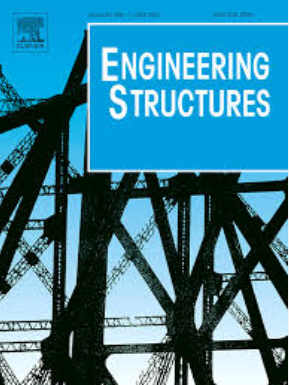Critical review of current wind turbine blades’ design and materials and their influence on the end-of-life management of wind turbines
IF 5.6
1区 工程技术
Q1 ENGINEERING, CIVIL
引用次数: 0
Abstract
Wind energy will likely be an essential contributor to the sustainable energy transition. However, the environmental impact of the wind sector still suffers from a poor end-of-life management of the wind turbine components. Wind turbine blades are particularly sensitive to this issue: these components are made of different materials and sub-components, often difficult to separate, segment and recycle. As a result, wind turbine blades are still mostly landfilled. In this review, the main design features and materials of wind turbine blades are presented and connected to the difficulties and opportunities related to the end-of-life management of wind turbines. Considering the possibility of life extension, structural health monitoring and repairing strategies are also discussed. Overall, wind turbine blades are complex components, which require a significant advancement of the scientific and technological state of the art for an efficient and sustainable end-of-life management.
求助全文
约1分钟内获得全文
求助全文
来源期刊

Engineering Structures
工程技术-工程:土木
CiteScore
10.20
自引率
14.50%
发文量
1385
审稿时长
67 days
期刊介绍:
Engineering Structures provides a forum for a broad blend of scientific and technical papers to reflect the evolving needs of the structural engineering and structural mechanics communities. Particularly welcome are contributions dealing with applications of structural engineering and mechanics principles in all areas of technology. The journal aspires to a broad and integrated coverage of the effects of dynamic loadings and of the modelling techniques whereby the structural response to these loadings may be computed.
The scope of Engineering Structures encompasses, but is not restricted to, the following areas: infrastructure engineering; earthquake engineering; structure-fluid-soil interaction; wind engineering; fire engineering; blast engineering; structural reliability/stability; life assessment/integrity; structural health monitoring; multi-hazard engineering; structural dynamics; optimization; expert systems; experimental modelling; performance-based design; multiscale analysis; value engineering.
Topics of interest include: tall buildings; innovative structures; environmentally responsive structures; bridges; stadiums; commercial and public buildings; transmission towers; television and telecommunication masts; foldable structures; cooling towers; plates and shells; suspension structures; protective structures; smart structures; nuclear reactors; dams; pressure vessels; pipelines; tunnels.
Engineering Structures also publishes review articles, short communications and discussions, book reviews, and a diary on international events related to any aspect of structural engineering.
 求助内容:
求助内容: 应助结果提醒方式:
应助结果提醒方式:


